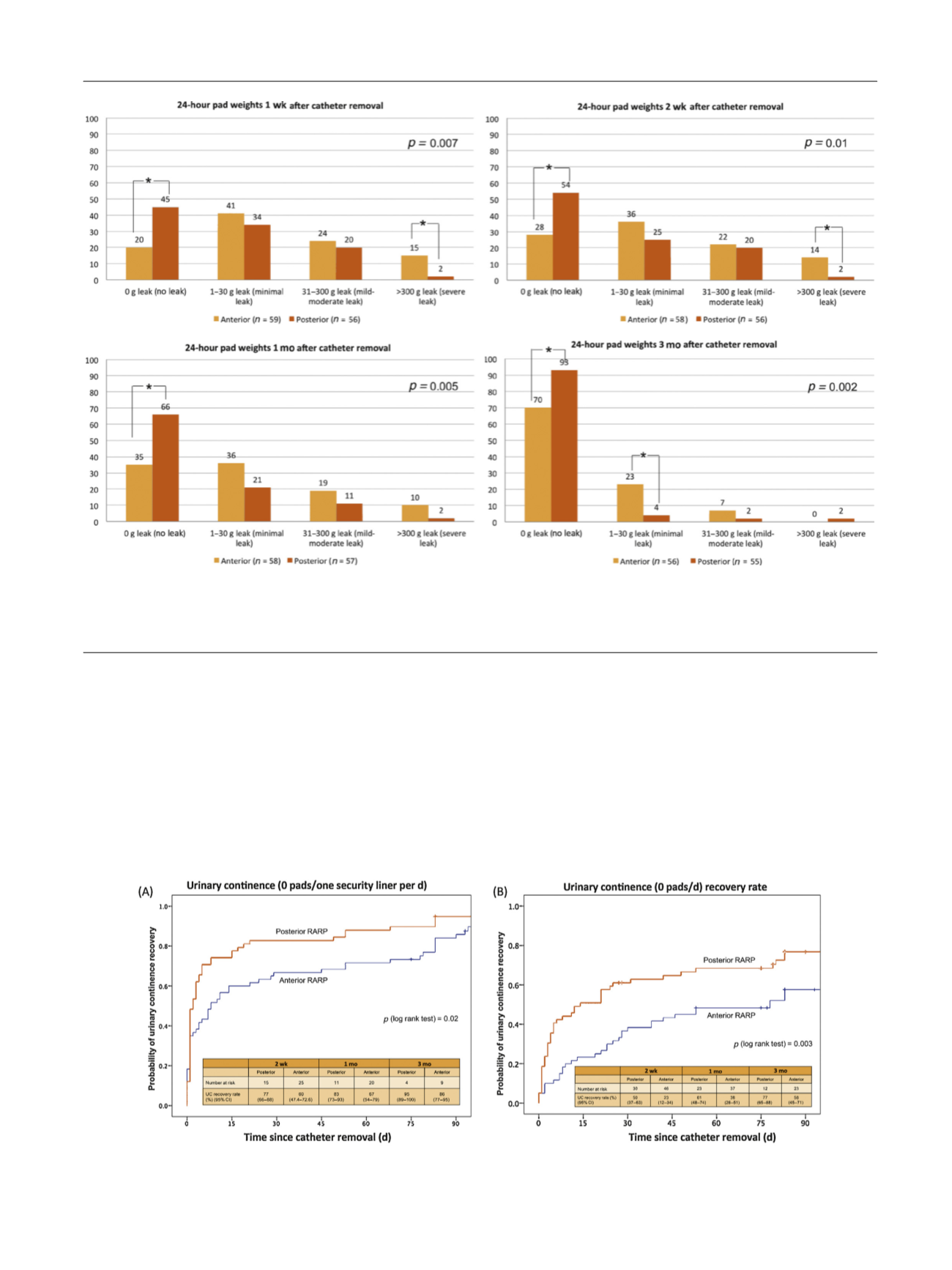

per-protocol comparison. The proportion of patients with
0 g leak at 1 wk was 45% in the posterior approach versus
20% in the anterior arm (
p
= 0.005;
Table 3and
Fig. 2).
3.3.
Secondary outcomes: time to continence recovery and
trends in urinary function
At 1, 2, and 3 mo after surgery, 83%, 88%, and 95% of men
undergoing the posterior approach were continent (0 pads/
one security pad per day), compared with 67%, 72%, and 86%
undergoing the anterior approach, respectively (log-rank
p
= 0.02). The median (95% confidence interval [CI]) time to
urinary continence recovery was 2 (1.2–2.8) d for the
posterior versus 8 (2.3–13.7) d for the anterior group
( Fig. 3 ).
The proportion of patients with 0 g leak was 66% in the
posterior versus 35% in the anterior arm 1 mo after catheter
removal, which increased to 93% and 70%, respectively, at
3 mo
( Fig. 2). Cox regression analyses showed that the
approach (posterior vs anterior) was significantly associated
with urinary continence recovery (0–1 pad/d odds ratio [OR]
[(Fig._2)TD$FIG]
Fig. 2 – The 24-h pad weights at 1
[6_TD$DIFF]
week
[7_TD$DIFF]
(wk
[8_TD$DIFF]
), 2 wk, 1
[9_TD$DIFF]
month
[10_TD$DIFF]
(mo
[11_TD$DIFF]
), and 3 mo following catheter removal in patients undergoing anterior
[1_TD$DIFF]
or posterior
RARP
[2_TD$DIFF]
. Numbers along
Y
-axis represent proportion (%) of patients in each category (no leak [0 g/d], minimal leak [1–30 g/d], mild–moderate leak [31–
300 g/d], or severe leak [>300 g/d]). The
p
values shown in the figures are derived from the omnibus chi-square test; groups with asterisk indicate a
statistically significant difference (
p
< 0.0125) after Bonferroni correction. RARP = robot-assisted radical prostatectomy.
[(Fig._3)TD$FIG]
Fig. 3 – Kaplan–Meier curves showing the recovery of urinary continence (defined as (A) 0 pads/one security pad per day and (B) 0 pads per day) in
patients undergoing anterior and posterior robot-assisted radical prostatectomy (RARP). CI = confidence interval; UC = urinary continence.
E U R O P E A N U R O L O G Y 7 2 ( 2 0 1 7 ) 6 7 7 – 6 8 5
681
















